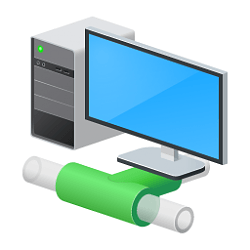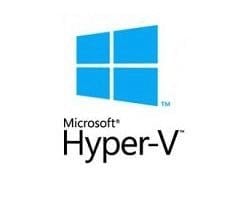EDITS AT BOTTOM
Bree - This time I Shut Down from inside the Win 11 VM. Then, the window goes black and shrinks and shows me the smaller window for the Virtual Machine Connection but with this popup message:
"The sessions was disconnected. If you want to continue, try to connect again. If the problem persists, contact your system administrator. Would you like to try to reconnect? [Reconnect] [Exit}."
Note that I had not disconnected myself, only Shut Down the VM.
This time, I waited while I'm typing this, and eventually hit [Reconnect]. The white popup disappears, and I see the small black Virtual Machine Connection window with these white letters:
"The virtual machine '[Name]' is turned off. To start the virtual machine, select 'Start' from the Actin Menu. [Start button]."
So, now, I hit Start.
My VM starts up, I get the beautiful blue folded paper, but after maybe five seconds that disappears, the screen shrinks to the black Virtual Machine Connection window with the error message
"The connection was lost because another user connected to the virtual machine. Try to connect again. If the problem persists, contact your system administrator. Would you like to try to reconnect? [Reconnect] [Exit}."
So I hit Reconnect. Now I see the aerial shot of Seattle suburb across the Sound. I hit Sign In. I am connected now to the blue folded paper but with Task Manager running as I had left it earlier !!! The previous instance did not fully shut down !!! I can tell because I had Task Manager running earlier in the VM.
From inside the VM, I Shut Down.
Then I get the same small black window and the first popup message noted at the top here. This time I hit Exit. In the Hyper-V Manager, there is no picture in the bottom pane, and the State of my VM is Off.
Could this be caused by my having all four Virtual Switches? Should I try to Remove the Internal and Private Virtual switches, leaving the External and maybe the Default?
One other thought: Earlier last night, in the VM, I ran one of my favorite personal utilities - this bat file:
Code:
sfc /scannow
Dism /Online /Cleanup-Image /RestoreHealth
sfc /scannow
timeout /t 5 /nobreak
findstr /c:"[SR]" %windir%\logs\cbs\cbs.log >> "C:\Users\[MyUserName]\Desktop\sfcdetails.txt"
notepad c:\windows\logs\cbs\cbs.log
notepad "C:\Users\[MyUserName]\Desktop\sfcdetails.txt"
pause
rem exit
It ran well and showed me the good results I expected. In fact, it might be this bat that fixed the VM's Network to show me the Shared folders on my Host.
And one other good thing - before I started this post and tried my Shut Downs, in the VM, in Documents, I created a new Folder and set it to be shared Read/Write by Everyone. Then, from the host, I copied a jpg and a pdf into it, and I was able to see and open them in the VM. So that is working nicely.
Anyway, what do you think about my Shut Down saga?
EDITS - Bree - Thanks for the link (four above) to USE LOCAL DEVICES, etc. It's working like a charm. Not only do I see all the hard drives on my Host PC, but when I plugged in a USB stick, it eventually showed up (with a nudge). This Hyper-V is really good!
(Question - is there a converse of this - on my Host Win 10 PC, is there a setting that similarly sees all of my Win 11 VM as an additional drive?)
ONE MORE DETAIL that (who knows) might be relevant to my Shut Down saga - In the Win 11 VM, in Networks, at the top level,
three computers are listed: my Win 10 Host, my Win 11VM and "tsclient", which is a stranger.. Before I turned on the "USE LOCAL DEVICES", a doubleclick on tsclient showed nothing. Now it shows all the hard drives on my PC !!! Do you have "tsclient" in your VM's "Networks"? (And what does "ts" stand for?)
But still would appreciate everyone's suggestions about my Shut Down saga.







